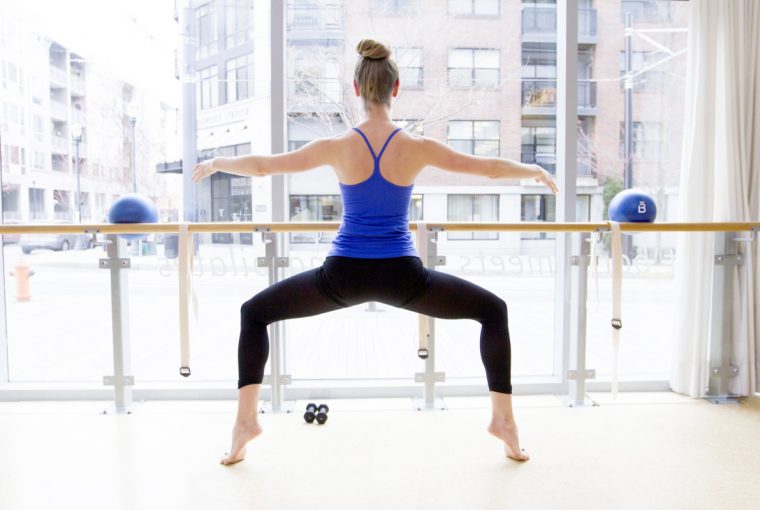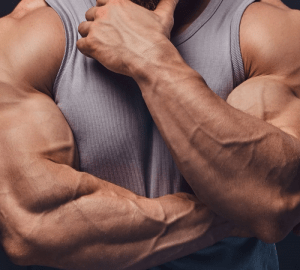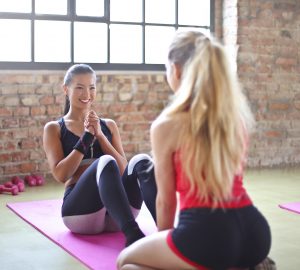Ballet is a fitness trend you won’t want to miss! Yet many people feel intimidated about trying real ballet. Here are some myths and what you need to know to let your inner ballerina shine.
1. You don’t have to be thin, leggy, flexible, or coordinated to do ballet.
We’ve all seen images of petite dancers performing athletic feats of startling beauty and skill. And who can forget the perfectionism and cutthroat competitiveness that tormented Natalie Portman in Black Swan? It’s no wonder many people feel intimidated about trying a plié!
Whether you’re 20 or 70, ballet is just good fitness.
The simple truth, however, is that ballet is an AMAZING workout that will put you in the best shape of your life. Ballet develops strength, tone, flexibility, balance, and grace — even if you don’t start out with any!
That unmistakably elegant ballet physique — shapely legs, trim waist, toned back and arms — comes from a formula of barre, stretching, and freestanding exercises that make up a typical ballet class. Whether you’re 20 or 70, ballet is just good fitness.
2. The only thing barre workouts and real ballet have in common is the barre.
Barre and ballet are two very different practices. So if you have not experienced ballet, it’s important to know what to expect.
Because posture and form are central to the technique, ballet engages the entire body with each exercise.
Barre classes use small muscle contractions and repetition-based routines to sculpt specific areas of the body. Ballet teaches how to control the body through fluid, full-range movements. The core and back engage while extending, bending, and lifting the arms and legs.
Other than the barre, there are no props in ballet class. Instead, gravity and movement provide resistance. Because posture and form are central to the technique, ballet engages the entire body with each exercise.
While barre classes are a version of calisthenics using the barre as a prop, ballet is an entire technique designed to build tone, flexibility, and balance through movement both at and away from the barre. In short, barre workouts are about creating tone through contraction; ballet is about developing strength and control through extension.
Ballet’s emphasis on movement with proper alignment hones beautifully efficient body mechanics. Translation: Your legs, hips, waist, back, and arms become stronger, longer, and leaner AND you carry yourself with greater ease and poise. Ballet not only changes how your body looks, but it also transforms the way you move.
3. A ballet workout is just as intense as a HIIT or boot-camp workout.
Don’t let the stylistic differences between ballet and boot camp fool you. Ballet’s emphasis on “placement” (form) means the technique actually gets more intense over time.
The first class may leave you wondering whether you worked enough, while the third class will have your core, calves, and inner thighs feeling the burn! Unlike many other forms of exercise that become less of a workout over time, the more familiar and correct you become in your ballet technique, the more results you get!
Although at the outset it may seem that you sweat more by doing crunches and jumping jacks, ballet’s total-body engagement ultimately develops a more athletic, functional, and refined body. Ballet dancers are among the strongest and most versatile athletes in the world. This is because ballet is about much more than strength. It’s about control. Even NFL players do ballet to help elevate their game!
If you want long, lean, strong, and flexible muscles, not to mention beautiful balance, control, and posture, then ballet is the workout for you. And as if a graceful body were not enough incentive, doing ballet will protect your body from injury and enhance all your other activities—even burpees!
So go ahead and get your pliés on! Ballet is the ultimate old-school (as in Louis XIV) workout for building the most elegant physique possible. And unlike hundreds of years ago when only privileged royals got to experience ballet, this practice is more accessible than ever to help you raise the barre on your fitness routine.




